Carolee Dean's Blog, page 28
July 15, 2012
Collaborative Book Launches: Books and Baubles and Beads, Oh My!
[image error]
It's ten weeks and counting until the release of FORGET ME NOT. I decided to take a break from writing and blogging and book launch preparations to go to my friend Desiree's house for a home jewelry party.
[image error] I went to graduate school with Desiree and she was my clinical supervisor when I was a wannabe SLP (speech-language pathologist), but we hadn't had time to connect much recently, so I decided to stop by her place for her jewelry party, and what a treat it was.
I made four new four friends who call themselves FOUR FRIENDS. They are four creative and inspiring local women who make jewelry and do home shows in their spare time (as if any woman has spare time).
[image error] I was immediately drawn to Sherri's display. Sherri, top left, is a physical therapist who works with Desiree. I had been looking all around town for flowered beads because I wanted to make forget-me-not bracelets as giveaways for my book launch and blog tour. Then I found the lovely pewter necklace at the right.
I was so excited. I love pewter and Sherri's work was so earthy. We spent half an hour collaborating on a bracelet design and she agreed to make bracelets for my book launch. Then I thought about how fun it would be to have the FOUR FRIENDS at my book release party at Alamosa Books on October 31. Forget Me Not comes out in October and ghosts figure prominently.
[image error] Sherri said I had to talk to Day of the Debi. That's their nickname for Debi (seated in the photo next to Sherri). Debi specializes in Hauntwear featuring skeletons from The Day of the Dead, but she also has some wonderful steam punk pieces. Debi and I got to talking and she's going to make some cool necklaces with poetry quotes from my book.
[image error] That all lead to a conversation with Kristen who makes amazing sterling silver necklaces and earrings and is also a painter. She agreed to make hand painted journals for the blog tour giveaway. Next stop was Shauna, seated to the far right, whose work is very gothic. She's going to do something fun with ravens.
So, if you happen to be in Albuquerque, New Mexico on Halloween, stop by Alamosa Books at 7:00 p.m. for books and baubles and beads, Oh my!
[image error] FORGET ME NOT BOOK LAUNCHAlamosa BooksOctober 31, 20127:00 p.m.-8:30 p.m.8810 Holly Avenue NEAlbuquerque, NM505-797-7101
[image error]
[image error] I went to graduate school with Desiree and she was my clinical supervisor when I was a wannabe SLP (speech-language pathologist), but we hadn't had time to connect much recently, so I decided to stop by her place for her jewelry party, and what a treat it was.
I made four new four friends who call themselves FOUR FRIENDS. They are four creative and inspiring local women who make jewelry and do home shows in their spare time (as if any woman has spare time).
[image error] I was immediately drawn to Sherri's display. Sherri, top left, is a physical therapist who works with Desiree. I had been looking all around town for flowered beads because I wanted to make forget-me-not bracelets as giveaways for my book launch and blog tour. Then I found the lovely pewter necklace at the right.
I was so excited. I love pewter and Sherri's work was so earthy. We spent half an hour collaborating on a bracelet design and she agreed to make bracelets for my book launch. Then I thought about how fun it would be to have the FOUR FRIENDS at my book release party at Alamosa Books on October 31. Forget Me Not comes out in October and ghosts figure prominently.
[image error] Sherri said I had to talk to Day of the Debi. That's their nickname for Debi (seated in the photo next to Sherri). Debi specializes in Hauntwear featuring skeletons from The Day of the Dead, but she also has some wonderful steam punk pieces. Debi and I got to talking and she's going to make some cool necklaces with poetry quotes from my book.
[image error] That all lead to a conversation with Kristen who makes amazing sterling silver necklaces and earrings and is also a painter. She agreed to make hand painted journals for the blog tour giveaway. Next stop was Shauna, seated to the far right, whose work is very gothic. She's going to do something fun with ravens.
So, if you happen to be in Albuquerque, New Mexico on Halloween, stop by Alamosa Books at 7:00 p.m. for books and baubles and beads, Oh my!
[image error] FORGET ME NOT BOOK LAUNCHAlamosa BooksOctober 31, 20127:00 p.m.-8:30 p.m.8810 Holly Avenue NEAlbuquerque, NM505-797-7101
[image error]
Published on July 15, 2012 18:46
Why I Write for Teens

The following is an excerpt of an article I recently wrote for the Southwest Sage:
I started writing stories for young people before Harry Potter and Twilight made it fashionable to do so, before there was the dystopian world of Hunger Games, before adults were scouring the young adult shelves and writing blogs focused exclusively on teen titles.
Before there were blogs.
Now teen fiction is hot, but back when I envisioned my first stories, there was no Printz Award to honor books in that murky world just beyond the Newbery but not yet in the realm of adult literature. One friend asked, "Why are you writing for teenagers? You could be putting your work out to a larger audience." Now, ironically, young adult fiction is that "larger audience." With popular teen sales skyrocketing, it is often the children’s section of publishing houses that carry them through recessions and economic down turns.
More and more adults are reading stories with children and teens as protagonists. This phenomenon became popular with Harry Potter when the British publisher marketed one cover for adults and another cover for children. They wisely realized that adults love books with young heroes, but are not always so crazy about the covers. Now with the invention of the Kindle, the adult audience for children’s books is expanding.
To read the rest of the article see page 6 of the Southwest Sage
Published on July 15, 2012 07:30
July 8, 2012
Writing Workshop: What's Hot in Teen Writing
In preparation for my upcoming workshop on writing for teen's on July 28 (see information below) I stopped by Alamosa Books, an independent Children's Bookstore here in Albuquerque, to talk with owner, Elizabeth Anker, and ask her impressions about the popular fantasy genre.


We started off with a discussion of steam punk. Then we explored the fantasy sub genres of dystopian literature and urban fantasy. I won't go into detail here because I'm using a lot of the information in my upcoming workshop, but I will follow up with a more detailed post in a few weeks. I will say I left the bookstore with several new books, so I know how I'll be spending the rest of my summer. Here's the steam punk title at the top of my reading list:
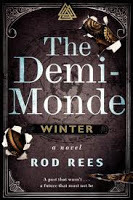
Elizabeth said that unlike many bookstores, Alamosa makes a distinction between fantasy and science fiction because she believes these are two different genres with two distinct audiences. She says science fiction has a bigger male audience with more sience based reality and less romance. Fantasy, on the other hand, attracts more female readers and contains more magic elements with lots of romance. This can make some novels hard to place if they contain elements of both fantasy and science fiction.
For more information about my upcoming writing workshop in Albuquerque call Southwest Writers Workshop at 505-265-9485WHAT'S HOT IN TEEN WRITINGCarolee Dean
Saturday, July 28
9 AM - 12 NoonBear Canyon Center4645 Pitt NEAlbuquerque, NM 87111
Call to Register: SWW Office 505-265-9485
Learn about the popular subgenres of teen fiction such as novels in verse, paranormal romance, steam punk, contemporary Young Adult (YA), and dystopian fiction. Then learn how to plot your story like a professional, using the presenter’s twelve step story analysis method called "The Secret Language of Stories." With this method, based on the Hero's Journey, explore a variety of plot ideas. Come prepared to brainstorm! Don't worry if you don't have an idea yet. You will by the time you finish this dynamic workshop.


We started off with a discussion of steam punk. Then we explored the fantasy sub genres of dystopian literature and urban fantasy. I won't go into detail here because I'm using a lot of the information in my upcoming workshop, but I will follow up with a more detailed post in a few weeks. I will say I left the bookstore with several new books, so I know how I'll be spending the rest of my summer. Here's the steam punk title at the top of my reading list:

Elizabeth said that unlike many bookstores, Alamosa makes a distinction between fantasy and science fiction because she believes these are two different genres with two distinct audiences. She says science fiction has a bigger male audience with more sience based reality and less romance. Fantasy, on the other hand, attracts more female readers and contains more magic elements with lots of romance. This can make some novels hard to place if they contain elements of both fantasy and science fiction.
For more information about my upcoming writing workshop in Albuquerque call Southwest Writers Workshop at 505-265-9485WHAT'S HOT IN TEEN WRITINGCarolee Dean
Saturday, July 28
9 AM - 12 NoonBear Canyon Center4645 Pitt NEAlbuquerque, NM 87111
Call to Register: SWW Office 505-265-9485
Learn about the popular subgenres of teen fiction such as novels in verse, paranormal romance, steam punk, contemporary Young Adult (YA), and dystopian fiction. Then learn how to plot your story like a professional, using the presenter’s twelve step story analysis method called "The Secret Language of Stories." With this method, based on the Hero's Journey, explore a variety of plot ideas. Come prepared to brainstorm! Don't worry if you don't have an idea yet. You will by the time you finish this dynamic workshop.
Published on July 08, 2012 05:00
July 1, 2012
Fitness for Sitters: Walking with Vampires
Between working full time for the public schools and making time to write, it's easy to get behind on reading. I often end up reading in bed and falling asleep after a few pages. I've had many late night conversations with my husband that go something like this:
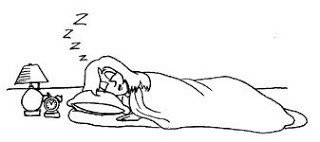 Hubbie: You're sleeping.Me: I'm just resting my eyes.Hubbie: You've been on the same page for ten minutes.Me: No I haven't.Hubbie: You're drooling on the book.Me: Snore
Hubbie: You're sleeping.Me: I'm just resting my eyes.Hubbie: You've been on the same page for ten minutes.Me: No I haven't.Hubbie: You're drooling on the book.Me: Snore
At this rate it can take forever to make it through a book.
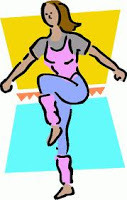 I like listening to books on tape while I drive, but going to the library to check out audio books takes time and when I visit the audio bookstore, they often don't have a lot of young adult selections in stock.
I like listening to books on tape while I drive, but going to the library to check out audio books takes time and when I visit the audio bookstore, they often don't have a lot of young adult selections in stock.
The other activity that often gets short-changed is exercise. It's hard to stay in shape when you spend hours sitting at a desk. By the time I get home in the evening, I'm too tired to go somewhere else. Especially somewhere exhausting like the gym. One day I had a flash of inspiration. I considered that if I listened to books on my phone while I exercised, I might actually accomplish both activities.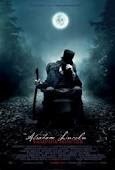 I recently joined
audible.com
and started downloading books to my iPhone. The first book was Abraham Lincoln Vampire Hunter by Seth Graham-Smith. I found the book to be very well researched, despite the subject, though I must admit that by the end of the story, the lines between history and horror were a little fuzzy.
I recently joined
audible.com
and started downloading books to my iPhone. The first book was Abraham Lincoln Vampire Hunter by Seth Graham-Smith. I found the book to be very well researched, despite the subject, though I must admit that by the end of the story, the lines between history and horror were a little fuzzy.
The story is built on the premise that vampires were behind the slave trade and the Civil War. No one complained when slaves went missing, so slavery provided the perfect cover for the vampire's bloody appetites. Rich southerners sided with the undead because it was lucrative, not to mention the fact that they were happy they were not on the menu. Abraham Lincoln saw through their real plot which was to have eventual control over everyone. He had a longstanding hatred of them because vampires were responsible for the death of his mother. The current movie version stars Benjamin Walker.
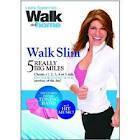 For the workout portion of this undertaking, I used a brand new workout video that I highly recommend: 5 Really Big Miles by Leslie Sansone. The title of the video is straightforward (kind of like the Lincoln-Vampire title). It cost me about thirteen dollars including shipping and came with an exercise band. There are several features that I really like about this video:
For the workout portion of this undertaking, I used a brand new workout video that I highly recommend: 5 Really Big Miles by Leslie Sansone. The title of the video is straightforward (kind of like the Lincoln-Vampire title). It cost me about thirteen dollars including shipping and came with an exercise band. There are several features that I really like about this video:
- By the time I am finished with the video (sometimes it takes a few
days) I have worked all the major muscle groups.- The people on the video look like my friends and neighbors. Not like someone out of a fitness
magazine.- The routines are very basic so I can concentrate on the story I'm listening to and NOT think
about tripping over my own feet trying to follow something complicated like Zumba.- The routines are broken down into segments of about fifteen minutes each. Every segment
represents one mile so I can measure my progress. Kind of like counting pages.
Now that summer vacation is here and I have more time to write, I'm using the workout routine to help me get up from my desk and get moving. I have developed tendonitis after years of computer use. I write for a while, then get up and walk (while listening to vampire stories of course). Write some more. Walk some more.
If all goes well, by the end of the summer I plan to have completed writing my new book, lost ten pounds, and finished listening to numerous novels.

 Hubbie: You're sleeping.Me: I'm just resting my eyes.Hubbie: You've been on the same page for ten minutes.Me: No I haven't.Hubbie: You're drooling on the book.Me: Snore
Hubbie: You're sleeping.Me: I'm just resting my eyes.Hubbie: You've been on the same page for ten minutes.Me: No I haven't.Hubbie: You're drooling on the book.Me: SnoreAt this rate it can take forever to make it through a book.
 I like listening to books on tape while I drive, but going to the library to check out audio books takes time and when I visit the audio bookstore, they often don't have a lot of young adult selections in stock.
I like listening to books on tape while I drive, but going to the library to check out audio books takes time and when I visit the audio bookstore, they often don't have a lot of young adult selections in stock. The other activity that often gets short-changed is exercise. It's hard to stay in shape when you spend hours sitting at a desk. By the time I get home in the evening, I'm too tired to go somewhere else. Especially somewhere exhausting like the gym. One day I had a flash of inspiration. I considered that if I listened to books on my phone while I exercised, I might actually accomplish both activities.
 I recently joined
audible.com
and started downloading books to my iPhone. The first book was Abraham Lincoln Vampire Hunter by Seth Graham-Smith. I found the book to be very well researched, despite the subject, though I must admit that by the end of the story, the lines between history and horror were a little fuzzy.
I recently joined
audible.com
and started downloading books to my iPhone. The first book was Abraham Lincoln Vampire Hunter by Seth Graham-Smith. I found the book to be very well researched, despite the subject, though I must admit that by the end of the story, the lines between history and horror were a little fuzzy. The story is built on the premise that vampires were behind the slave trade and the Civil War. No one complained when slaves went missing, so slavery provided the perfect cover for the vampire's bloody appetites. Rich southerners sided with the undead because it was lucrative, not to mention the fact that they were happy they were not on the menu. Abraham Lincoln saw through their real plot which was to have eventual control over everyone. He had a longstanding hatred of them because vampires were responsible for the death of his mother. The current movie version stars Benjamin Walker.
 For the workout portion of this undertaking, I used a brand new workout video that I highly recommend: 5 Really Big Miles by Leslie Sansone. The title of the video is straightforward (kind of like the Lincoln-Vampire title). It cost me about thirteen dollars including shipping and came with an exercise band. There are several features that I really like about this video:
For the workout portion of this undertaking, I used a brand new workout video that I highly recommend: 5 Really Big Miles by Leslie Sansone. The title of the video is straightforward (kind of like the Lincoln-Vampire title). It cost me about thirteen dollars including shipping and came with an exercise band. There are several features that I really like about this video:- By the time I am finished with the video (sometimes it takes a few
days) I have worked all the major muscle groups.- The people on the video look like my friends and neighbors. Not like someone out of a fitness
magazine.- The routines are very basic so I can concentrate on the story I'm listening to and NOT think
about tripping over my own feet trying to follow something complicated like Zumba.- The routines are broken down into segments of about fifteen minutes each. Every segment
represents one mile so I can measure my progress. Kind of like counting pages.
Now that summer vacation is here and I have more time to write, I'm using the workout routine to help me get up from my desk and get moving. I have developed tendonitis after years of computer use. I write for a while, then get up and walk (while listening to vampire stories of course). Write some more. Walk some more.
If all goes well, by the end of the summer I plan to have completed writing my new book, lost ten pounds, and finished listening to numerous novels.
Published on July 01, 2012 13:06
June 24, 2012
Carolyn Meyer and THE WILD QUEEN
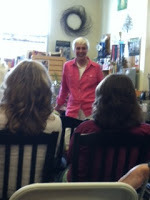 Carolyn Meyer appeared at Alamosa Books last Saturday to talk about her latest installment in the Royals Series - The Wild Queen: The Days and Nights of Mary Queen of Scots. Carolyn told how young Mary left Scotland at the age of 5 to be raised in the French court, as she was betrothed to the future king. After being widowed as a teenager, she returned to Scotland to rule a wild and unwieldy country. Here are some excerpts from the School Library Journal Review. "The scheming and rivalries of Scotland are covered in such a way that the novel makes complicated history accessible and intriguing... Vivid descriptions of her education and socialization at the French royal court display the author’s extensive research."
Carolyn Meyer appeared at Alamosa Books last Saturday to talk about her latest installment in the Royals Series - The Wild Queen: The Days and Nights of Mary Queen of Scots. Carolyn told how young Mary left Scotland at the age of 5 to be raised in the French court, as she was betrothed to the future king. After being widowed as a teenager, she returned to Scotland to rule a wild and unwieldy country. Here are some excerpts from the School Library Journal Review. "The scheming and rivalries of Scotland are covered in such a way that the novel makes complicated history accessible and intriguing... Vivid descriptions of her education and socialization at the French royal court display the author’s extensive research."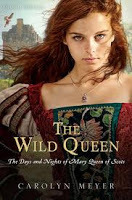 Carolyn's discussion of her research was fascinating. She knows her subjects well, and tries to visit the countries she writes about whenever possible. She weaves in so much detail, it's hard to believe she wasn't actually present as the historic intrigues unfolded. I'm currently writing a novel containing many historical elements, so I know how time-consuming such research can be.Not only is Carolyn a master at recreating history, she does it in such a way that she makes history extremely accessible to teen readers. The intense accounts of love, betrayal, jealousy and revenge rival the drama of a Jersey Shores episode, but with style and class... and proper English.
Carolyn's discussion of her research was fascinating. She knows her subjects well, and tries to visit the countries she writes about whenever possible. She weaves in so much detail, it's hard to believe she wasn't actually present as the historic intrigues unfolded. I'm currently writing a novel containing many historical elements, so I know how time-consuming such research can be.Not only is Carolyn a master at recreating history, she does it in such a way that she makes history extremely accessible to teen readers. The intense accounts of love, betrayal, jealousy and revenge rival the drama of a Jersey Shores episode, but with style and class... and proper English.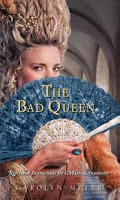 To give an example of how accessible her books are for young readers, I'll share a personal example. I was recently sitting in my living room reading The Bad Queen: Rules and Instructions for Marie Antoinette, when my teenage daughter walked in and said, "I recognize that book. I read it. It's really good." What is noteworthy is that my daughter hates reading, and she hates history. I can't count the number of books I've given her, praying to instill a love of literature, hoping she would find among the pages characters who spoke to her. If done well, historical fiction can do that. Carolyn does it well!
To give an example of how accessible her books are for young readers, I'll share a personal example. I was recently sitting in my living room reading The Bad Queen: Rules and Instructions for Marie Antoinette, when my teenage daughter walked in and said, "I recognize that book. I read it. It's really good." What is noteworthy is that my daughter hates reading, and she hates history. I can't count the number of books I've given her, praying to instill a love of literature, hoping she would find among the pages characters who spoke to her. If done well, historical fiction can do that. Carolyn does it well!
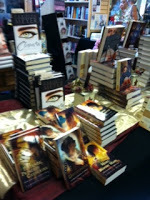 Carolyn gave me an Advanced Reader's Copy of The Wild Queen when we were in Chicago at the International Reading Association, but that didn't stop me from buying books. I went a little book crazy and purchased:Doomed Queen AnneDuchessinaBeware, Princess ElizabethMary, Bloody Mary
Carolyn gave me an Advanced Reader's Copy of The Wild Queen when we were in Chicago at the International Reading Association, but that didn't stop me from buying books. I went a little book crazy and purchased:Doomed Queen AnneDuchessinaBeware, Princess ElizabethMary, Bloody MaryWhen I got home, I hid them away. I'm giving them to my daughter for her birthday. Oops! Hope she's not reading this post.
Published on June 24, 2012 08:00
June 17, 2012
The Tao of Pooh
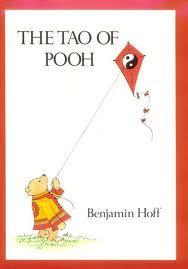
I was browsing the bookstore shelves, looking for another book on philosophy to send to my son who is working at a summer camp with no TV and very little internet, when I came upon this little gem, The Tao of Pooh by Benjamin Hoff. It's only 158 pages, so I took the liberty of reading it before mailing it off to Colorado.
Hoff uses the simplicity of Winnie-the-Pooh to examine the basic teachings of Lao-tse in the Tao Te Ching (Tao Virtue Book). He compares the simplicity of Pooh to the "Uncarved Block," or what is natural and plain, representing the quiet nature that does things spontaneously rather than over thinking and over planning. He examines the habit of trying to arrange things to fit a predetermined view of how life should be and contrasts that with simply living life, day by day. He claims that for those who go through life in this simple way, things just have a way of working themselves out. Quoting Piglet he writes:
"Pooh hasn't much Brain, but he never comes to any harm. He does silly things and they turn out right."
A similar concept Hoff explores is the Wu Wei, or as he calls it, the Pooh Way "without doing, causing, or making." He compares it to water flowing around the rocks, rather than trying to force a straight path through them. Tao literally means "Way," and he contends that going with the flow and listening to our intuition gives us a Sensitivity to Circumstances that helps guide our path.
Now that it's summer, its easier to believe that life can be so simple. I just hope I remember the lesson come September.
Published on June 17, 2012 14:30
June 10, 2012
Searching for Meaning
Have you ever felt as if you were being led to a book?
A couple of months ago my work laptop started malfunctioning. I took it upstairs to our Information Technology (IT) department which happens to be located in a room inside of our media center (aka: library).
As I hung around in the library waiting for the laptop problem to be ascertained, I started looking through the books on the shelf outside of IT. I happened to find myself in the philosophy section. This peaked my interest because although my son rarely read for pleasure, during his senior year in high school he developed a keen interest in philosophy and read many books on the subject. This spurred several interesting and thought provoking conversations during long road trips when we were visiting colleges.
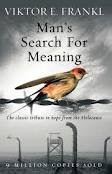 Needless to say, as I found myself in the philosophy section of the high school where I work, I began exploring the shelves with great interest. One particular book caught my eye. It was Viktor E. Frankl's Man's Search for Meaning. The book had been recommended to me in the past, but I had never read it. As I began thumbing through the pages, I discovered the incredible true story of a Jewish psychiatrist who found himself imprisoned in several notorious Nazi concentration camps during world War II including Auschwitz.
Needless to say, as I found myself in the philosophy section of the high school where I work, I began exploring the shelves with great interest. One particular book caught my eye. It was Viktor E. Frankl's Man's Search for Meaning. The book had been recommended to me in the past, but I had never read it. As I began thumbing through the pages, I discovered the incredible true story of a Jewish psychiatrist who found himself imprisoned in several notorious Nazi concentration camps during world War II including Auschwitz.
I checked out the book, took it home, and ended up reading it in one night! I don't remember what was wrong with my computer, but the story of Frankl's struggle to maintain hope and dignity in the most oppressive of circumstances will be something I will remember forever.
The first half of the book chronicles his concentration camp experiences and his struggle to find a reason to live. The second half of the book explores the theory of logo therapy that he developed, in part, based on his concentration camp experiences. Something that was crucial to his survival was finding meaning in every moment. Even in suffering we all have choices. He says that we can't avoid suffering but we can find meaning in it and choose how we deal with it.
Here is a quote from pages 65-66 that demonstrates his philosophy:
"We who have lived in the concentration camps can remember the men who walked through the huts comforting others, giving away their last piece of bread. They may have been few in number, but they offer sufficient proof that everything can be taken from a man but one thing: the last of the human freedoms--to choose one's attitude in any given set of circumstances, to choose one's own way."
It's no wonder this book has sold over twelve million copies in twenty-four languages.
This summer between semesters, my son found a summer job working at a camp in Colorado. There is no TV, no cell coverage, and one computer with Internet access that must be shared with all the staff. As I was considering what to send him that wouldn't get eaten by the squirrels or be difficult to pack on his return trip back to college in the fall, I thought of Frankl's book. Thanks to amazon.com shipping, this fascinating story is now on its way to Colorado.
A couple of months ago my work laptop started malfunctioning. I took it upstairs to our Information Technology (IT) department which happens to be located in a room inside of our media center (aka: library).
As I hung around in the library waiting for the laptop problem to be ascertained, I started looking through the books on the shelf outside of IT. I happened to find myself in the philosophy section. This peaked my interest because although my son rarely read for pleasure, during his senior year in high school he developed a keen interest in philosophy and read many books on the subject. This spurred several interesting and thought provoking conversations during long road trips when we were visiting colleges.
 Needless to say, as I found myself in the philosophy section of the high school where I work, I began exploring the shelves with great interest. One particular book caught my eye. It was Viktor E. Frankl's Man's Search for Meaning. The book had been recommended to me in the past, but I had never read it. As I began thumbing through the pages, I discovered the incredible true story of a Jewish psychiatrist who found himself imprisoned in several notorious Nazi concentration camps during world War II including Auschwitz.
Needless to say, as I found myself in the philosophy section of the high school where I work, I began exploring the shelves with great interest. One particular book caught my eye. It was Viktor E. Frankl's Man's Search for Meaning. The book had been recommended to me in the past, but I had never read it. As I began thumbing through the pages, I discovered the incredible true story of a Jewish psychiatrist who found himself imprisoned in several notorious Nazi concentration camps during world War II including Auschwitz.I checked out the book, took it home, and ended up reading it in one night! I don't remember what was wrong with my computer, but the story of Frankl's struggle to maintain hope and dignity in the most oppressive of circumstances will be something I will remember forever.
The first half of the book chronicles his concentration camp experiences and his struggle to find a reason to live. The second half of the book explores the theory of logo therapy that he developed, in part, based on his concentration camp experiences. Something that was crucial to his survival was finding meaning in every moment. Even in suffering we all have choices. He says that we can't avoid suffering but we can find meaning in it and choose how we deal with it.
Here is a quote from pages 65-66 that demonstrates his philosophy:
"We who have lived in the concentration camps can remember the men who walked through the huts comforting others, giving away their last piece of bread. They may have been few in number, but they offer sufficient proof that everything can be taken from a man but one thing: the last of the human freedoms--to choose one's attitude in any given set of circumstances, to choose one's own way."
It's no wonder this book has sold over twelve million copies in twenty-four languages.
This summer between semesters, my son found a summer job working at a camp in Colorado. There is no TV, no cell coverage, and one computer with Internet access that must be shared with all the staff. As I was considering what to send him that wouldn't get eaten by the squirrels or be difficult to pack on his return trip back to college in the fall, I thought of Frankl's book. Thanks to amazon.com shipping, this fascinating story is now on its way to Colorado.
Published on June 10, 2012 14:30
June 2, 2012
Lunch with Kim and Cover Reveal
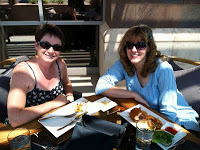 Now that school is out and my summer vacation is in full swing, I'm catching up with writer friends. Yesterday I had a brainstorming lunch with author Kimberley Griffiths Little. We talked about story ideas and what we are working on now. We met at Vintage and had a delightful waiter who started pitching us story ideas as soon as he found out we were writers. He said he was going to run out and buy Kim's new book for his daughter's eleventh birthday which is coming up this week. The novel is Circle of Secrets and it was the first line that hooked him:
Now that school is out and my summer vacation is in full swing, I'm catching up with writer friends. Yesterday I had a brainstorming lunch with author Kimberley Griffiths Little. We talked about story ideas and what we are working on now. We met at Vintage and had a delightful waiter who started pitching us story ideas as soon as he found out we were writers. He said he was going to run out and buy Kim's new book for his daughter's eleventh birthday which is coming up this week. The novel is Circle of Secrets and it was the first line that hooked him:The summer I turned eleven, I found out that ghosts are real.
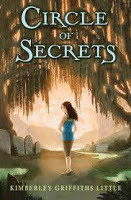
Speaking of great books by Kimberley Griffiths Little, she has a cover reveal going on this week over at her blog along with lots of book giveaways. Here is the synopsis of her new book, When the Butterflies Came (Scholastic Books):
Everybody thinks Tara Doucet has the perfect life. But in reality, Tara’s life is anything but perfect: Her dear Grammy Claire has just passed away, her mother is depressed and distant, and she and her sister Riley can’t seem to agree on anything. But when mysterious and dazzling butterflies begin to follow her around after Grammy Claire’s funeral, Tara just knows in her heart that her grandmother has left her one final mystery to solve.
A strange butler shows up to take Tara and Riley to Grammy Claire’s house, where Tara finds a stack of keys and detailed letters from Grammy Claire herself. Note by note, Tara learns unexpected truths about her grandmother’s life. As the letters grow more ominous and the keys more difficult to decipher, Tara realizes that the secrets she must uncover could lead to mortal danger. And when Tara and Riley are swept away to the beautiful island of Chuuk to hear their grandmother’s will, Tara discovers the most shocking truth of all — one that will change her life forever. The cover for this book is dazzling. If you'd like to check it out and possibly win free books, go to Kim's Cover Reveal
Published on June 02, 2012 17:10
May 27, 2012
Alyson Noel and FATED in Albuquerque
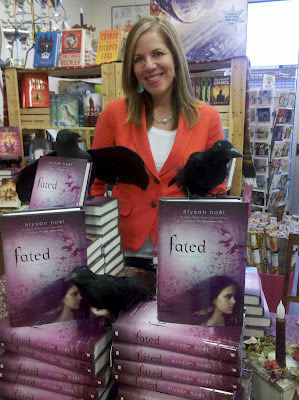
Alyson Noel kicked off her new Soul Seekers series in Albuquerque last Tuesday with FATED at Alamosa Books. FATED is the story of Daire Santos, a young girl who's mother sends her to Enchantment, New Mexico to live with a grandmother she has never met. Only Daire's grandmother knows what the girl's visions mean - that Daire is destined to travel between the worlds of the living and the dead as a soul seeker. Filled with romance, shamanism, and charm, this new series is sure to be a hit.
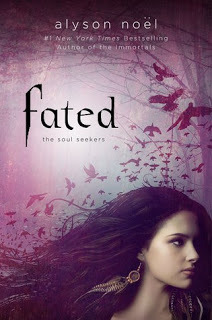 Go here to listen to the Audio Clip of FATED available through Macmillan Audio Books
Go here to listen to the Audio Clip of FATED available through Macmillan Audio BooksAlyson talked about her journey as a writer and said the beginning wasn't easy. FAKING NINETEEN was rejected by several publishers, including her own St. Martin's Press. At the time they didn't even publish YA. Then a new editor came on board who wanted to try books for teens. Her agent pitched the book again, and it sold. FAKING NINETEEN was the first teen title published by St. Martin's Press. Alyson said sales for her first seven books were unremarkable. Then EVERMORE hit the New York Times Best Seller List and she's been on a roll ever since. She attributes the initial success of EVERMORE, in part, to the fact that Walmart put in a huge order. They loved the book and loved the cover. She pointed out that a lot of towns don't have bookstores and Walmart is where a lot of people find books. Of course it also helped that EVERMORE was a really good story.
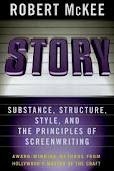 When rewriting her first novel, Alyson said her agent recommended she read STORY by Robert McKee. She knew within just a few pages what was wrong with her book and how to fix it. She still looks back through STORY before starting a new manuscript. The other book she recommended was SAVE THE CAT by Blake Snyder. Snyder, like McKee, bases his story analysis on screenplay format. He breaks stories into fifteen "beats" that keep the action moving forward. Alyson said one of the first things she does when she sits down to write is to make sure that her story has all fifteen of the "beats."
When rewriting her first novel, Alyson said her agent recommended she read STORY by Robert McKee. She knew within just a few pages what was wrong with her book and how to fix it. She still looks back through STORY before starting a new manuscript. The other book she recommended was SAVE THE CAT by Blake Snyder. Snyder, like McKee, bases his story analysis on screenplay format. He breaks stories into fifteen "beats" that keep the action moving forward. Alyson said one of the first things she does when she sits down to write is to make sure that her story has all fifteen of the "beats."
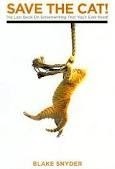
Regarding having other people critique one's writing, Alyson said she is a very private writer and does not like to share her work with anyone until it's in pretty good shape. She said "Advice comes in all forms and not all of it is good." She warned against getting too many people's opinions in your head and losing track of who you are writing for. If you are going to work with someone, make sure they understand and appreciate your genre. You don't want someone who focuses on literary fiction to critique your romance novel or vice versa.
It was very special to have Alyson Noel in New Mexico for her first stop on the FATED tour. Fans will have a special treat in store with this exciting new series.
Published on May 27, 2012 14:30
May 20, 2012
Watching the Eclipse
Thousands of people from many distant places gathered in Albuquerque this evening for the solar eclipse. My daughter came down from Colorado with her boyfriend, a high power telescope, and a solar filter. Thank God for science buffs. We gathered in our backyard with friends, family, and neighbors to view the moon coming between the earth and the sun. The process began around 6:30 p.m. and reached it's apex with the ring of fire appearing around 7:30. It was the first annular eclipse in 18 years.
Hardware stores sold out of welding glasses and hundreds waited in line at Balloon Fiesta Park for three hours or more where astronomers had set up telescopes for public viewing. A friend of ours also brought a stack of film negatives. Supposedly, if you stack four layers of film negatives together, you can look at the sun. I certainly hope that's true because we were all trying it out as we waited for a turn at the telescope.
We were very lucky to have this view from our backyard. Here are two photos through the telescope lens.
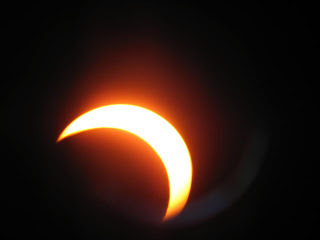

Besides the telescope, we made the traditional pin holes in paper. Not nearly as clear as the telescope, but surprisingly effective. What we didn't expect was to see images of the eclipse on the fence through the shadows of our tree leaves.


Next up is the Transverse of Venus on June 5!

Hardware stores sold out of welding glasses and hundreds waited in line at Balloon Fiesta Park for three hours or more where astronomers had set up telescopes for public viewing. A friend of ours also brought a stack of film negatives. Supposedly, if you stack four layers of film negatives together, you can look at the sun. I certainly hope that's true because we were all trying it out as we waited for a turn at the telescope.
We were very lucky to have this view from our backyard. Here are two photos through the telescope lens.


Besides the telescope, we made the traditional pin holes in paper. Not nearly as clear as the telescope, but surprisingly effective. What we didn't expect was to see images of the eclipse on the fence through the shadows of our tree leaves.


Next up is the Transverse of Venus on June 5!
Published on May 20, 2012 20:36



